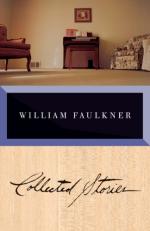|
This section contains 375 words (approx. 2 pages at 300 words per page) |

|
Faulkner is a great writer in part because he mastered virtually all of the techniques of representation that had been developed in the two centuries of intense fiction writing before he took up his pen. Nearly all these techniques appear in his short stories. Two characteristics stand out because they help account for his success in publishing his stories in mass market magazines while also suggesting why his novels were less successful in the mass market. Although his stories are predominantly serious in theme, they are filled with wit and humor. However, in virtually every story he wrote, he attempted to stretch readers beyond what they might expect to find in a popular story.
Few of his stories are as broadly humorous as "A Bear Hunt" (The Saturday Evening Post, 1934). There Ratliff plays a joke on a hunter to cure him of the hiccups that have plagued him...
|
This section contains 375 words (approx. 2 pages at 300 words per page) |

|




